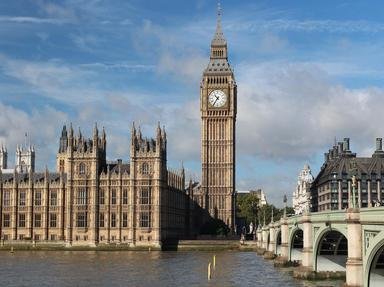Quiz Answer Key and Fun Facts
1. Sir Robert Walpole is regarded as the first modern Prime Minister, but which town in Norfolk did he represent in the House of Commons as MP?
2. In 1762, the only person to be elected to a seat in the House of Lords and subsequently be appointed Prime Minister took office. Which peer was it that was elevated to the Premiership?
3. William Pitt the Elder was the MP for Bath when he became Prime Minister on 30 July 1766, but he gave up his seat for an earldom four days later when he took on which additional government role?
4. Between 1770 and 1782, Lord North served as Prime Minister. However, he was the MP for Banbury, so why was he able to sit in the House of Commons rather than the House of Lords?
5. When he became Prime Minster in 1783, William Pitt the Younger was the MP for Appleby. However, at the 1784 general election he stood for election in which seat?
6. Although there had been Scottish prime ministers serving from the House of Lords, who was the first to represent a Scottish constituency in the House of Commons?
7. Although there is no specific prohibition against the Prime Minister serving from the House of Lords, it is an accepted convention that he or she should be an MP in the House of Commons. Who was the last Prime Minister to serve a full term from the Lords?
8. Between December 1905 and May 1923, four men served as Prime Minster, none of whom represented an English constituency. Which of the four represented a Welsh seat?
9. When Ramsay MacDonald became the first Prime Minister of a Labour government in 1924, he represented the Welsh seat of Aberavon. When he returned to the premiership in 1929, he instead served as MP for a seat in which coal mining area of England?
10. Following the 1945 general election, Winston Churchill remained as Prime Minister for three weeks while overseas votes were counted. He had entered the election as MP for Epping, but came out as the MP for which other Essex seat?
Source: Author
Red_John
This quiz was reviewed by FunTrivia editor
stedman before going online.
Any errors found in FunTrivia content are routinely corrected through our feedback system.
